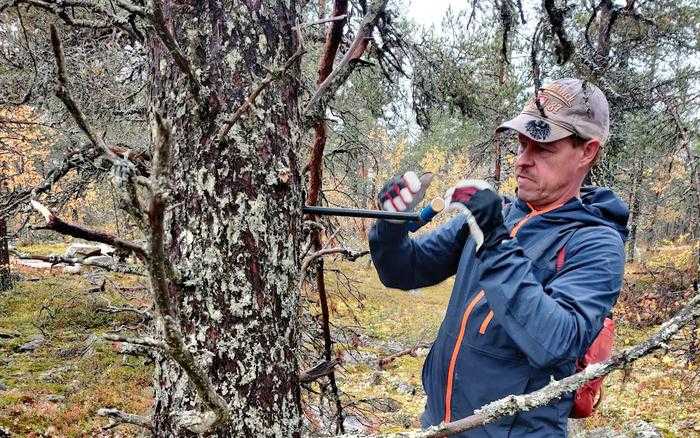Researchers from the University of Helsinki, Natural Resources Institute Finland, and the University of Oulu have discovered evidence of a powerful solar storm that occurred in 1859, known as the Carrington Event, in the tree rings of Lapland. This finding could help scientists better understand and prepare for future solar storms that can disrupt electrical and communication systems on Earth.
Solar storms occur when the Sun releases massive clouds of charged particles, called solar plasma flows, which interact with Earth’s geomagnetic field. These interactions can cause geomagnetic storms, resulting in aurorae and, in extreme cases, damage to electrical and communication networks.
The Carrington Event, one of the largest recorded solar storms in the last two centuries, caused white light flares on the Sun, fires at telegraph stations, and aurorae visible even in tropical regions. Until now, scientists had only detected radiocarbon traces from much more intense solar storms.
“Radiocarbon is like a cosmic marker describing phenomena associated with Earth, the solar system and outer space,” says Markku Oinonen, Director of the University of Helsinki’s Laboratory of Chronology, who led the study.
Radiocarbon (14C) is a radioactive isotope of carbon produced in the upper atmosphere when high-energy particles from solar storms interact with the Earth’s atmosphere. This radiocarbon eventually ends up in plants through photosynthesis and is preserved in the annual rings of trees.
To study the Carrington Event, researchers extracted samples from tree rings grown in specific years and measured the fraction of radiocarbon in the pure carbon using a particle accelerator. They found a spike in radiocarbon concentration in Lapland trees following the Carrington storm, which had not been detected before using conventional radiocarbon techniques.
This discovery opens up a new way to investigate the frequency of medium-sized solar storms like the Carrington Event, which have not occurred in modern times but could pose significant threats to modern infrastructure if they were to happen today.
“A solar storms corresponding to the Carrington event in modern times would disrupt electrical and mobile networks and cause major problems for satellite and navigation systems, leading to problems in, for example, air traffic. This is why accurate knowledge of solar behaviour benefits society,” Oinonen explains.
The study also revealed that the radiocarbon content of trees in Lapland differed from that of trees at lower latitudes, suggesting that the excess radiocarbon caused by the solar flare may have been primarily transported to the lower atmosphere through northern regions, contrary to the general understanding of its movement.
“It’s possible that the cyclic change in the production of radiocarbon in the upper atmosphere caused by the variation in solar activity has resulted in the local differences on the ground level seen in our findings,” says Doctoral Researcher Joonas Uusitalo from the Laboratory of Chronology.
This discovery can help scientists better understand atmospheric dynamics and the carbon cycle from the time before human-generated fossil fuel emissions, enabling the development of more detailed carbon cycle models.
The study was a collaborative effort between researchers from the University of Helsinki, Natural Resources Institute Finland, University of Oulu, Nagoya University, Yamagata University, and ETH Zurich. The research received funding from the Research Council of Finland, the Finnish Cultural Foundation, and the Emil Aaltonen Foundation.
With historical records showing significant geomagnetic storms in 1730 and 1770, further research into these events is likely to be the next focus for the team, as they continue to unravel the mysteries of solar storms and their impact on Earth.


